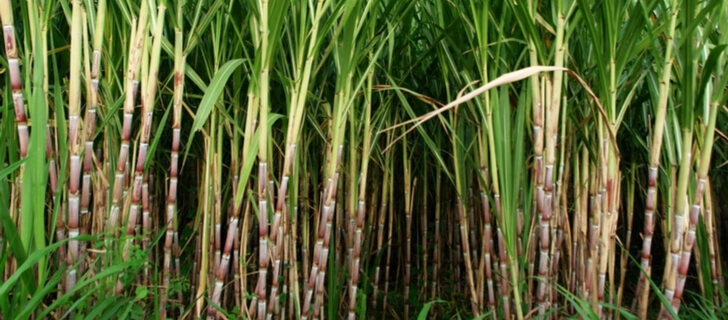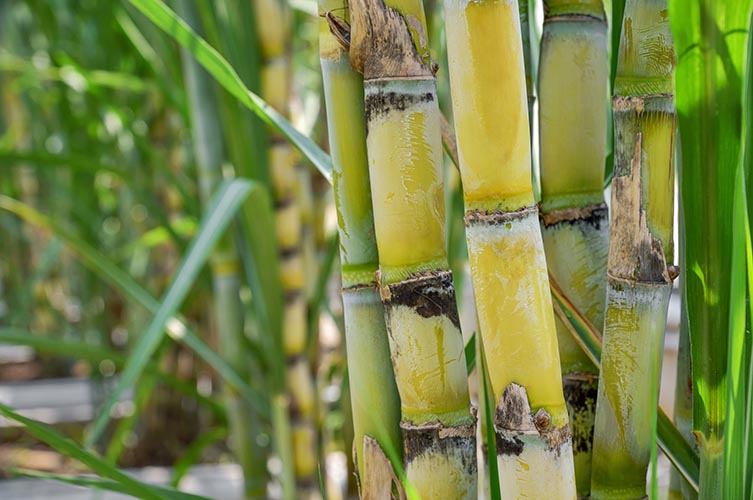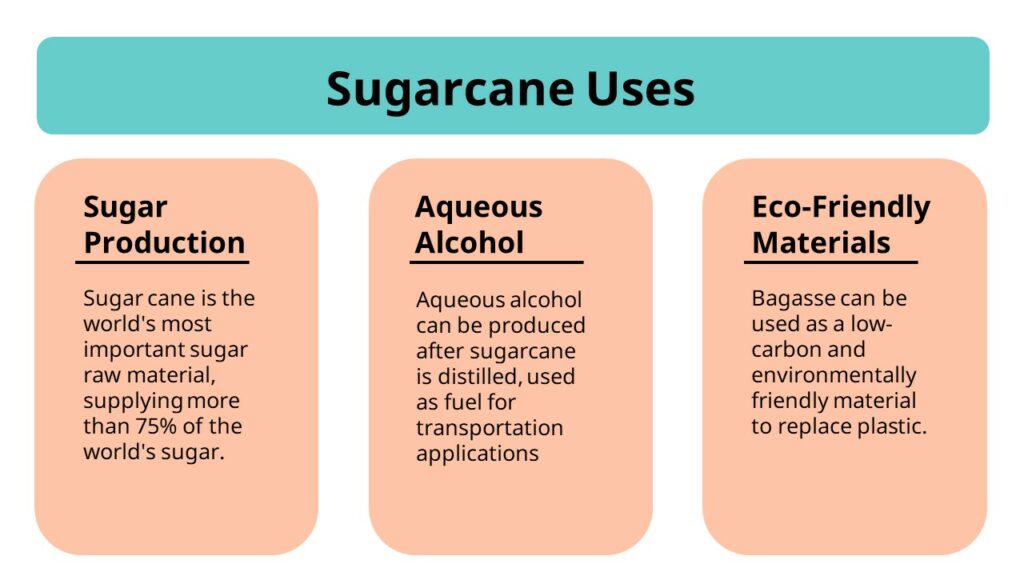Comprehending Exactly How Sugar Canes Work: What Are Sugar Canes Made Use Of For in Food and Beyond?
Sugar walking canes are important to various facets of both culinary and commercial techniques. Their convenience permits them to be changed into sweeteners, beverages, and even biofuels. As one explores the trip from farming to processing, the diverse applications of sugar canes reveal a complex interplay in between farming and industry. The ramifications of sugar walking cane production prolong past simple energy, elevating questions regarding ecological sustainability and financial effect.

The History and Beginning of Sugar Canes
Although often considered provided in modern-day diet plans, the history and beginning of sugar walking canes reveal a complicated journey that extends countless years. Belonging To Southeast Asia, sugar walking cane was first grown around 8000 BCE, with its sweet juice becoming highly valued by early people. By the very first millennium advertisement, it spread out to India, where it was improved right into taken shape sugar, a noteworthy advancement that transformed its usage and trade. The intro of sugar cane to the Mediterranean happened around the 7th century, many thanks to Arab traders, that acknowledged its financial potential.During the Age of Exploration, European homesteaders developed sugar ranches in the Caribbean, substantially affecting global trade. By the 17th century, sugar came to be a staple product, sustaining economies and affecting social structures. The tale of sugar walking canes is intertwined with agriculture, commerce, and social exchanges, noting its importance in forming modern-day cooking methods and financial systems.

Growing and Gathering Practices
The cultivation and harvesting of sugar canes entail a number of crucial practices that determine the top quality and return of the crop - What Are Sugar Canes Used For. Secret aspects include reliable dirt prep work techniques, exact planting approaches, and efficient collecting strategies. Recognizing these methods is crucial for enhancing manufacturing and making sure sustainability in sugar walking stick farming
Dirt Preparation Methods
Reliable dirt preparation techniques are vital for effective sugar walking cane farming, as they lay the structure for healthy and balanced growth and excellent return. The procedure starts with dirt screening to analyze nutrient degrees and pH balance, permitting for tailored modifications. Tilling and raking are after that utilized to break and freshen the soil up compaction, enhancing root penetration. Incorporating raw material, such as garden compost or well-rotted manure, improves dirt fertility and framework. In addition, proper water drainage systems are essential to stop waterlogging, which can hinder cane growth. Cover cropping may also be made use of to subdue weeds and enhance soil health. These practices collectively assure that sugar walking stick has the most effective setting to prosper, causing robust plant health and wellness and boosted efficiency.
Planting and Growth
Successful growing and growth methods are crucial for making the most of the yield of sugar walking stick. The procedure starts with selecting healthy seed walking canes, which are segments of mature stalks rich in buds. These seed walking sticks are commonly planted in well-prepared dirt, ideally at a deepness of 4 to 6 inches, guaranteeing sufficient dampness and aeration. Sugar cane flourishes in cozy climates with adequate sunlight and calls for consistent watering, particularly throughout completely dry spells. Fertilizing with nitrogen, potassium, and phosphorus is important to promote robust growth. Weed control is likewise crucial, as competition can hinder development. Normal surveillance of plant health and soil conditions permits timely treatments, eventually causing an effective plant that fulfills market needs.
Collecting Methods
Harvesting sugar walking cane calls for mindful planning and execution to assure maximum return and top quality. Typically, the harvest takes place when the walking stick gets to perfect sugar material, commonly in between 12 to 18 months after planting. There are two key approaches: guidebook and mechanical harvesting. Hand-operated harvesting includes laborers using machetes to reduce the stalks at ground degree, making sure minimal damages to the plant and soil. On the other hand, mechanical harvesting uses specific machines that reduced, chop, and move the walking cane, boosting performance and lowering labor costs. Mechanical methods can lead to greater soil compaction and loss of nutrients. No matter of the method, timely harvesting is crucial, as hold-ups can result in reduced sugar top quality and increased vulnerability to conditions and pests.
Processing Methods for Sugar Removal
The processing of sugar cane is a crucial phase in sugar production, encompassing a number of crucial strategies - What Are Sugar Canes Used For. Harvested walking stick goes through crushing and juicing to remove its wonderful liquid. This juice after that continues with purification and crystallization, transforming it into the sugar most frequently utilized today
Harvesting Sugar Cane
Sugar cane harvesting marks a critical stage in the production process, where timing and strategy play necessary roles in optimizing yield. Commonly, the harvest happens when sugar material goes to its optimal, which differs based on environment and development problems. Workers make use of customized tools or guidebook devices to reduce the cane at the base, making certain very little damages to the plant. Appropriate strategy is necessary; reducing expensive can lower the quality and quantity of the sugar removed later on. After reducing, the walking cane has to be moved immediately to processing facilities to stop perishing and sugar destruction. The efficiency of the harvesting procedure substantially affects the total performance and productivity of sugar walking cane farming, making it an essential focus for manufacturers.
Crushing and Juicing
As soon as sugar walking cane is collected, the following necessary action involves juicing and squashing to extract the wonderful liquid which contains sucrose. This process generally uses heavy equipment designed to squash the stalks, breaking down the coarse structure and launching the juice. Rollers or mills apply significant pressure, enabling the walking stick juice to drain while dividing the coarse deposit, recognized as bagasse. As soon as smashed, the cane click here for more info is usually subjected to a collection of pushing stages to make best use of juice extraction. The gathered juice is abundant in sugar and may contain impurities, which will be resolved in later processing actions. On the whole, juicing and crushing are essential strategies that transform harvested sugar walking stick into a liquid kind appropriate for further improvement.
Filtration and Crystallization
Filtration and formation are pivotal processes in transforming raw walking stick juice into refined sugar. After extracting juice from smashed sugar walking canes, the fluid contains impurities such as plant minerals, proteins, and fibers. To accomplish filtration, the juice undertakes explanation, where heat and lime are contributed to precipitate pollutants, which are after that eliminated. The cleared up juice is then focused through dissipation to develop a thick syrup.Next, condensation occurs, where sugar crystals develop as the syrup cools. This procedure normally involves seeding the syrup with existing sugar crystals to advertise consistent development. The resulting crystals are separated from the continuing to be molasses via centrifugation, producing pure sugar. This polished product is then dried and packaged for numerous culinary uses.
Culinary Use Sugar Canes
While often associated primarily with sugar, sugar walking canes supply a functional array of cooking applications past their duty in sugar production. Fresh sugar walking cane can be juiced, generating a sweet, invigorating drink enjoyed in many exotic areas. This juice functions as a base for healthy smoothies and cocktails, including an one-of-a-kind taste profile.Additionally, sugar walking stick syrup, stemmed from boiling down the juice, is utilized as a natural sugar in numerous dishes, from marinades to desserts. The syrup passes on a rich, caramel-like flavor, enhancing both wonderful and full-flavored recipes.In some cuisines, sugar walking cane stalks are barbequed or roasted, supplying a distinctive great smoky preference that complements vegetables and meats. Furthermore, sugar cane can be included into desserts, such as sweets and desserts, where its sweetness and fibrous structure develop fascinating contrasts. In general, sugar walking canes add to both ingenious and typical cooking productions throughout varied societies.
Industrial Applications Past Food
Beyond their cooking uses, sugar walking canes play a considerable function in numerous commercial applications, adding to industries such as bioenergy, paper production, and bioplastics. The fibrous material of sugar cane is utilized in the production of biofuels, particularly ethanol, which functions as a sustainable energy resource that lowers reliance on nonrenewable fuel sources. In the paper sector, bagasse, the coarse deposit left after juice extraction, is refined into pulp for paper and cardboard manufacturing, promoting sustainable practices by utilizing waste. Additionally, improvements in bioplastic modern technology have caused the growth of biodegradable plastics stemmed from sugar cane, supplying an environmentally friendly alternative to conventional petroleum-based plastics. These industrial applications not only enhance the worth of sugar walking canes but likewise straighten with global activities in the direction of sustainability and eco-friendly sources, showing their adaptability past the kitchen area.

The Ecological Effect of Sugar Cane Manufacturing
The manufacturing of sugar walking stick, regardless of its various commercial benefits, presents considerable ecological difficulties. Deforestation is typically a repercussion, as substantial areas of land are cleared to grow sugar walking stick, leading to environment loss and biodiversity decline. In addition, the extensive farming practices connected with sugar walking cane growing can cause dirt degradation and disintegration. The hefty use plant foods and chemicals to maximize yields adds to water air pollution, detrimentally impacting water ecosystems.Moreover, sugar walking cane manufacturing is connected to raised greenhouse gas emissions, particularly through land-use changes and the burning of walking stick fields before harvest. These methods not only influence air quality yet likewise add noticeably to environment modification. Additionally, the water-intensive nature of sugar walking cane farming places stress and anxiety on local water sources, influencing neighborhoods and ecosystems reliant on these supplies. Dealing with these environmental impacts is important for sustainable sugar walking cane production in the future.
Frequently Asked Questions
Are There Health And Wellness Conveniences Surrounding Consuming Sugar Cane?
The concern of wellness advantages connected to sugar walking stick consumption highlights potential advantages. Sugar cane might give hydration, essential minerals, and anti-oxidants, but moderation is essential because of its all-natural sugar web content and feasible wellness implications.
Exactly How Does Sugar Walking Cane Contrast to Other Sugar Nutritionally?

Sugar cane offers all-natural sweet taste, mostly making up sucrose, while other sweeteners differ in structure and caloric content. Contrasted to artificial choices, sugar cane supplies minerals and vitamins, though it remains high in calories and carbohydrates.
Can Sugar Cane Be Expanded in Non-Tropical Regions?
Sugar walking stick mostly flourishes in tropical environments, requiring warm temperature levels and plentiful rainfall. While some non-tropical regions try cultivation, success is limited as a result web of inadequate heat and expanding seasons, making massive manufacturing testing.
What Are the Common Parasites or Conditions Affecting Sugar Canes?
Common bugs influencing sugar walking canes consist of the sugarcane borer and aphids, while conditions like leaf scald and red rot position substantial dangers. Efficient monitoring methods are necessary for maintaining healthy and balanced sugar cane crops and taking full advantage of yields.
Exactly How Does Sugar Walking Cane Impact Local Economies?
The impact of sugar walking stick on regional economic climates is substantial, giving employment possibility, increasing agricultural industries, and adding to exports. Its farming sustains neighborhood companies and improves area advancement with raised income and infrastructure renovations. Native to Southeast Asia, sugar walking cane was very first grown around 8000 BCE, with its pleasant juice coming to be extremely valued by very early people. The intro of sugar cane to the Mediterranean occurred around the 7th century, thanks to Arab investors, who recognized its economic potential.During the Age of Exploration, European homesteaders developed sugar haciendas in the Caribbean, considerably affecting worldwide trade. The processing of sugar walking stick is a critical stage in sugar production, page encompassing numerous key techniques. While typically associated mainly with sugar, sugar walking sticks offer a functional variety of culinary applications beyond their role in sugar production. The hefty usage of pesticides and fertilizers to optimize returns contributes to water pollution, adversely influencing marine ecosystems.Moreover, sugar walking stick production is linked to raised greenhouse gas exhausts, especially through land-use adjustments and the burning of walking stick areas prior to harvest.